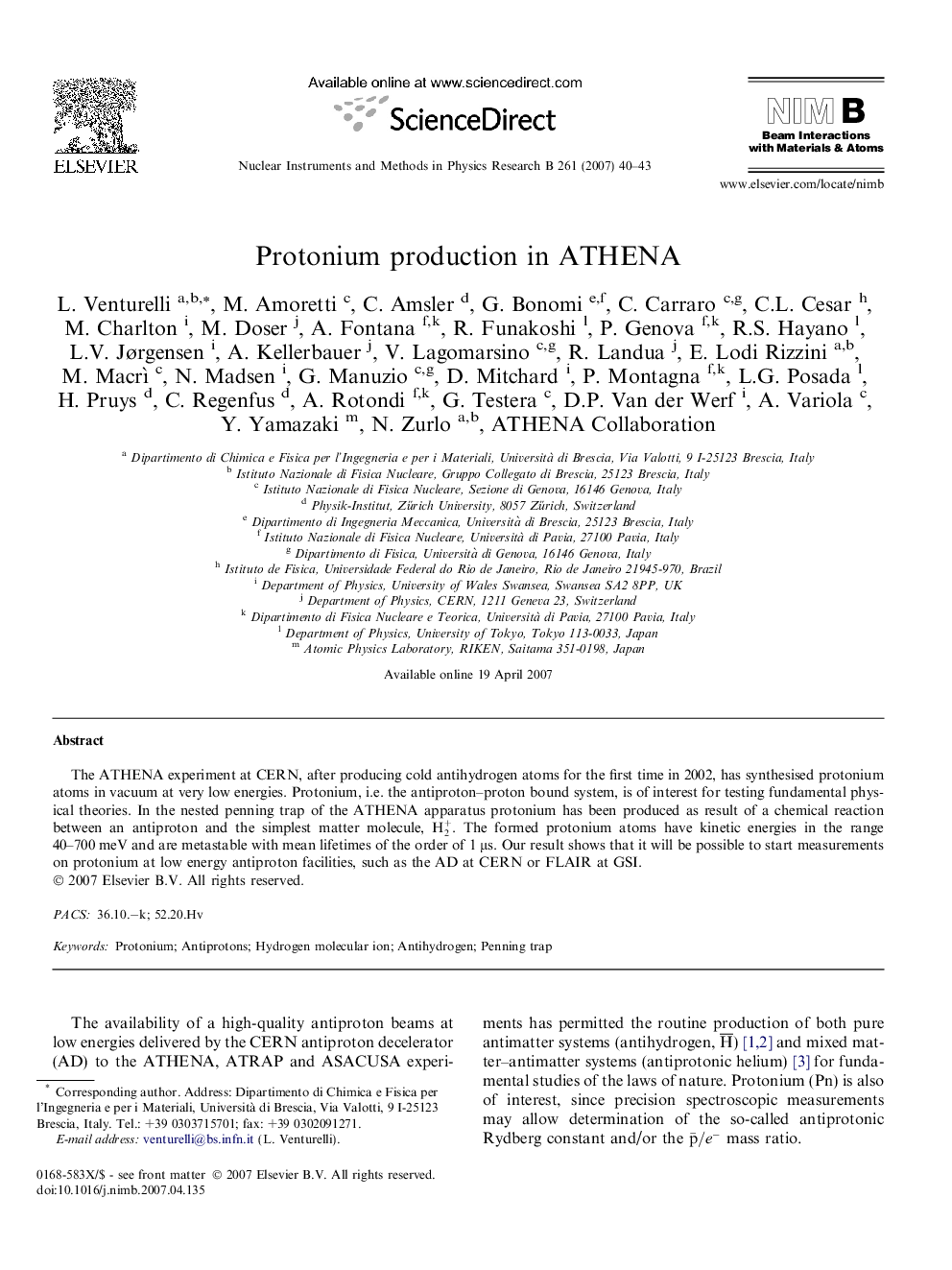| Article ID | Journal | Published Year | Pages | File Type |
|---|---|---|---|---|
| 1685642 | Nuclear Instruments and Methods in Physics Research Section B: Beam Interactions with Materials and Atoms | 2007 | 4 Pages |
Abstract
The ATHENA experiment at CERN, after producing cold antihydrogen atoms for the first time in 2002, has synthesised protonium atoms in vacuum at very low energies. Protonium, i.e. the antiproton–proton bound system, is of interest for testing fundamental physical theories. In the nested penning trap of the ATHENA apparatus protonium has been produced as result of a chemical reaction between an antiproton and the simplest matter molecule, H2+. The formed protonium atoms have kinetic energies in the range 40–700 meV and are metastable with mean lifetimes of the order of 1 μs. Our result shows that it will be possible to start measurements on protonium at low energy antiproton facilities, such as the AD at CERN or FLAIR at GSI.
Related Topics
Physical Sciences and Engineering
Materials Science
Surfaces, Coatings and Films
Authors
L. Venturelli, M. Amoretti, C. Amsler, G. Bonomi, C. Carraro, C.L. Cesar, M. Charlton, M. Doser, A. Fontana, R. Funakoshi, P. Genova, R.S. Hayano, L.V. Jørgensen, A. Kellerbauer, V. Lagomarsino, R. Landua, E. Lodi Rizzini, M. Macrì, N. Madsen,
